
This page last revised 23 August 2006 -- S.M.Gon III
Introduction
Ecoregion
Conservation Targets
Viability
Goals
Portfolio
TNC Action Sites
Threats
Strategies
▫
Tables
Maps & Figures
CPT Database
Appendices
Glossary
Sources
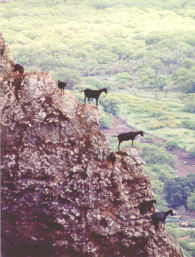
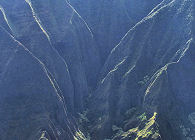
Dry cliffs occur in the leeward portions of the West Maui Mountains.
Dry Cliff System
Natural communities occupyingsteep (>65º) slopes in regions receiving less than75 inches annual precipitation, or otherwise bearing prevailinglydry substrate conditions comprise the dry cliff system in theHawaiian High Islands Ecoregion. This system is found on theislands of Hawai‘i, Maui, Moloka‘i, Lāna‘i,Kaho‘olawe, O‘ahu, and Kaua‘i, and is best developedon the leeward sides of the islands, for example, the steepestportions of the leeward flank of West Maui, the cliffs of EastMoloka‘i, the seacliffs of Lāna‘i andKaho‘olawe, the steeper slopes of the Wai‘anae Mountains(O‘ahu), and the leeward canyonlands of Kaua‘i. It occurstypically below or adjacent to either the lowland mesic system or the lowland dry system.There are a number of naturalcommunities described within this system, typically a variety ofgrasslands and shrublands, the slopes being too steep to supportforests. Biologicaldiversity is low to moderate in this system, and specializedplants occur there, such as Brighamia and Tetramolopium.
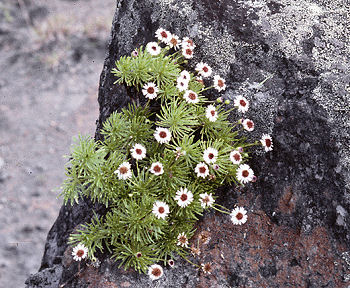 Tetramolopium filiforme,an endangered aster, occurs only on dry cliffs of the Wai'anae conservation area on O'ahu.
Tetramolopium filiforme,an endangered aster, occurs only on dry cliffs of the Wai'anae conservation area on O'ahu.

Brighami insignis grows only on the Napali Coast of Kaua'i. Brighamia are cliff-adapted Hawaiian lobeliads with a rosette of leaves atop a thick stem. Photo: Harold St. John.

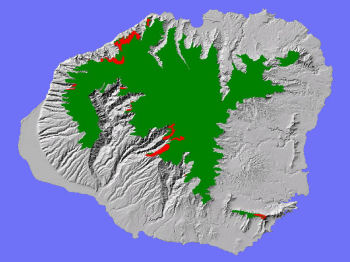
The Dry Cliff System on Kaua'i (red outlined shaded areas above) occurs on steep-sided interior canyons and northern seacliffs.
Natural communities and species of this system are listed among nested targets via the appendices.

 Tetramolopium filiforme,an endangered aster, occurs only on dry cliffs of the Wai'anae conservation area on O'ahu.
Tetramolopium filiforme,an endangered aster, occurs only on dry cliffs of the Wai'anae conservation area on O'ahu. 
Brighami insignis grows only on the Napali Coast of Kaua'i. Brighamia are cliff-adapted Hawaiian lobeliads with a rosette of leaves atop a thick stem. Photo: Harold St. John.


The Dry Cliff System on Kaua'i (red outlined shaded areas above) occurs on steep-sided interior canyons and northern seacliffs.
Natural communities and species of this system are listed among nested targets via the appendices.
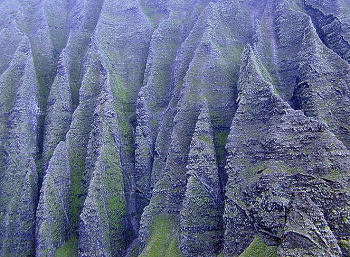
The Dry Cliff System in Hawai‘i includes some of the most rugged and steep topography; refugia for many rare plant species.
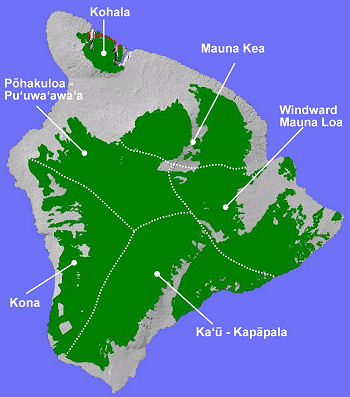
The Dry CliffSystem on Hawai‘i Island(red outlined shaded areas above) occursin only the oldest and most eroded conservation area: Kohala.
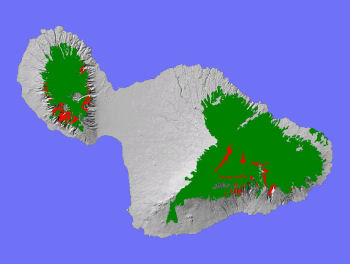
The Dry Cliff System on Maui (red outlined shaded areas above) occurs in both East and West Maui conservation areas.
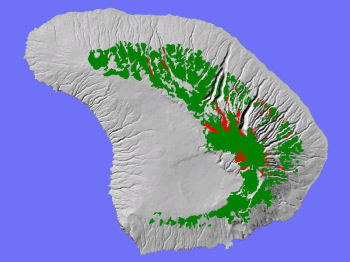
The Dry Cliff System on Lāna'i (red outlined shaded areas above) occurs in steep-sided gulches.
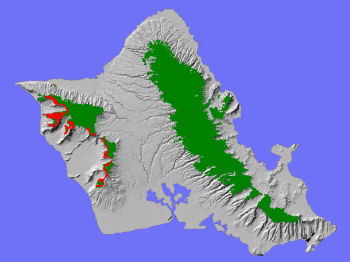
The Dry Cliff System on O'ahu (red outlined shaded areas above) occurs in the older and more eroded Wai'anae conservation area.